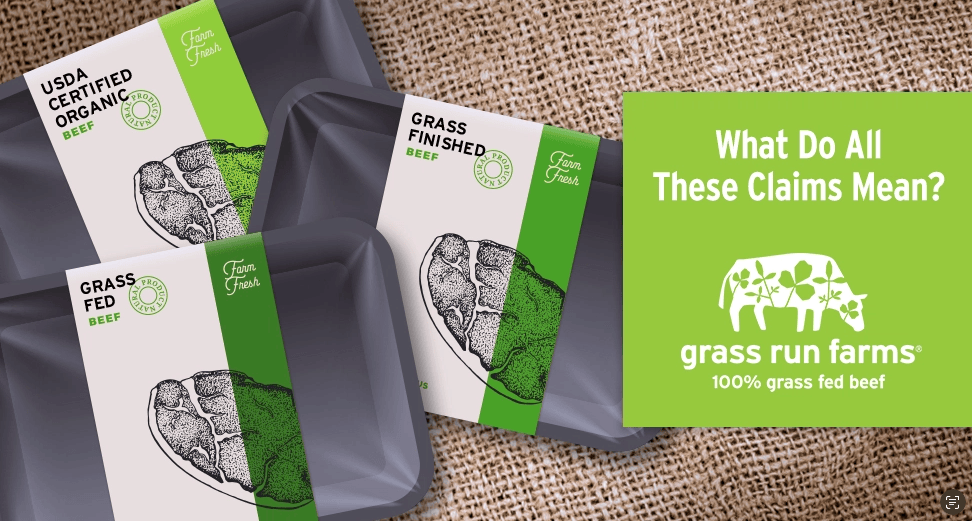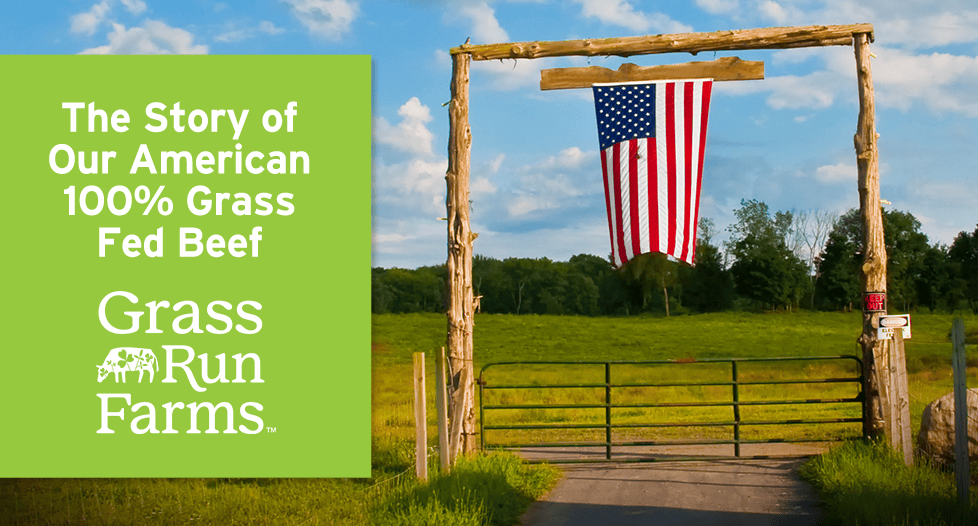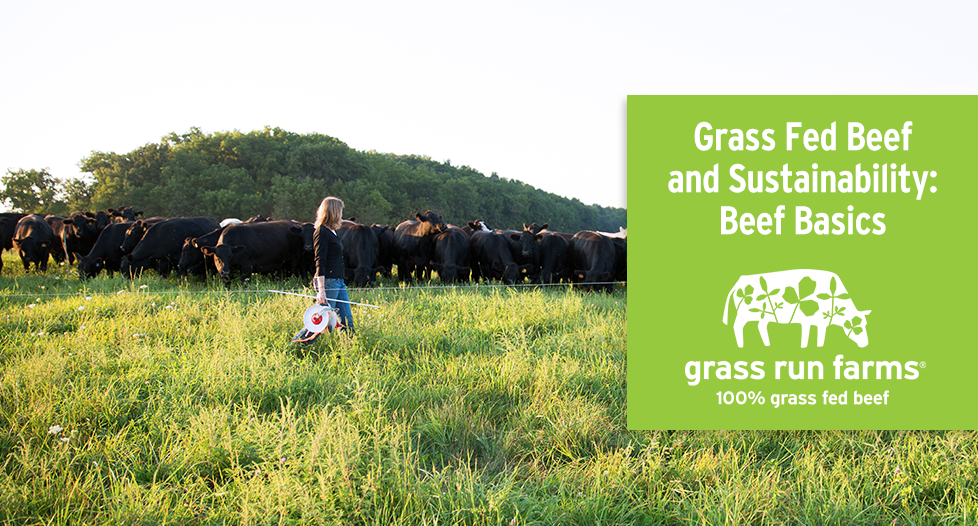March 24, 2021
Grass fed beef is delicious and nutritious, but did you know that the production practices used by grass fed cattle producers are also eco-friendly? In this article, we explore a few of these green production processes, including rotational and regenerative grazing.
What is rotational grazing?
Rotational grazing is one system for managing cattle in which a large pasture is divided into smaller areas, allowing the animals to be moved from one area to another easily. Rotating grazing areas according to a schedule gives the land and forage (the cattle’s food source) time to recover and regrow.

What are the benefits of rotational grazing?
There are many benefits of rotational grazing, including the improvement of soil structure and distribution of nutrients throughout a pasture. Rotational grazing promotes carbon sequestration while preventing overgrazing, which limits soil erosion and its impacts on nutrient density in the forage that grass fed cattle consume.
Carbon sequestration, or the long-term capture and storage of carbon from the atmosphere in soil, supports plant growth as well as improved soil structure and productivity. By moving livestock between pastures, roots grow deeper as cattle hooves till the earth and increase carbon content in the soil. The result is better water retention and grass growth.
Carbon sequestration is a promising method of mitigating the effects of greenhouse gases (GHG) in the atmosphere because it allows pastures to rest and regrow, improves forage quality, and distributes manure more evenly across the land.
What is regenerative grazing?
The term “regenerative grazing” is often used alongside terms like rotational grazing. But what do these terms mean and how do they all relate to one another?
Regenerative grazing is an umbrella term that refers to a change in mindset from traditional grazing to regenerative. In other words, the regenerative mindset is geared toward more proactive planning and active management of soil. This mindset change leads to process changes that aim to improve soil and animal health, increase plant diversity, and boost ranch productivity.
Rotational grazing is just one aspect of regenerative grazing.
Regenerative grazing is also (per its name) directly tied to the holistic practice of regenerative agriculture.
What is regenerative agriculture?
Regenerative agriculture is the process of restoring degraded soils using practices based in ecological principles (like adaptive grazing). At its root, regenerative agriculture is about:
- Building soil’s organic matter and biodiversity
- Promoting healthier, more productive soil that is drought- and flood-resilient
- Decreasing the use of chemical inputs and subsequent pollution
- Safeguarding clean air and water
- Enhancing wildlife habitats
- Capturing carbon in the soil to combat climate change (that’s carbon sequestration!)
How else does grass fed beef production impact the environment?
Apart from responsible grazing, the grass fed beef industry has a profound respect for the natural cycles of the land, sun, and water supply. Our producers utilize these natural resources efficiently to protect animal and team member well-being. Additionally, our ranchers are all local to the Midwest, building strong, mutually beneficial relationships with their communities.
Second, grass fed cattle are expert upcyclers, meaning that they consume plant-based leftovers that are otherwise inedible to humans. Cattle take that plant waste and turn it into high-quality, super delicious protein.
And finally, cattle also help us make the most of unfarmable land.
Stock Delicious Grass Fed Beef with Roots in Regenerative Agriculture
Our mission is to achieve a more sustainable food supply while providing delicious, nutritious beef. Get in touch with a Grass Run Farms team member to learn more about the benefits of stocking our 100% grass fed beef.
Note: This article was originally published in 2020, then updated in 2021 and 2024.









